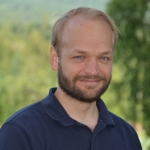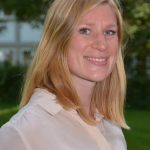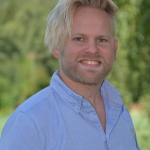Will offer better treatment for young people with depressive symptoms
To enhance the support for young individuals experiencing depression, research indicated that the younger demographic did not benefit as much from treatment as the older population at Modum Bad. This led to the initiation of the pilot project UNG.


Pål Ulvenes
–The goal was to offer young people more tailored, effective, and quicker treatment. There were several good reasons for this, says Pål Ulvenes, who conceived the UNG project. Becoming depressed early in life can have consequences for participation in various crucial aspects of life, risking exclusion from significant arenas such as school, work, or socializing with friends and family. Additionally, the emotional burden is substantial. Young individuals referred to the Depression Department had often already disengaged from both school and employment. Long waiting lists for treatment meant they remained stuck unnecessarily.
Recognition and Belonging
– We strongly desired to reduce both waiting and treatment time for this young group, says Ulvenes. It became essential to assist young individuals with other adjustments, such as returning to education and employment, establishing a comfortable home, and improving communication with parents and other significant individuals. The hope was that people of the same age and life situation would focus on the treatment, contributing to recognition and belonging within the group, thereby fostering effective treatment processes. Thus, the work on the UNG project began.
New elements

Linne Melsom
UNG is an eight-week intensive treatment program for young adults with persistent depressive symptoms. The project is a collaboration between the Department of Depressive Disorders and the research department. “It was incredibly exciting to create a treatment program that we believed in,” says Linne Melsom, a psychologist in the treatment team. “We build on what research tells us about what constitutes good treatment, and on several years of clinical experience from the department. We brought with us what we had the most confidence in. Additionally, we introduced new elements that we believed would be useful for the young individuals.”
«We had a strong desire to reduce both waiting and treatment time for this young group.”»
Intensive and Focused
The treatment is intensive and focused, aiming for all treatment elements to have a clear rationale and be specifically directed toward the treatment model. “We work with a short-term dynamic therapy model. The focus is on establishing contact and becoming familiar with one’s own emotions. These emotions can, for various reasons, become difficult and conflicted. They often linger as a ‘festering sore,’ causing discomfort, depressive symptoms, and creating distance from other people.”
Skill Training

Mikkel Eielsen
Doctor in the treatment team, Mikkel Eielsen, explains that group skill training was added as a “treatment element.” “We know that training skills is crucial for inducing change. The same applies when working with emotions. Therefore, we used concrete exercises to train skills such as assertiveness, closeness, and positive emotions. In addition, we focused on improving everyday life by addressing sleep, daily structure, diet, and physical activity. It was also a common goal to return to education or enter the workforce, leading to collaboration with a social worker.”
Reduced Treatment
Time To provide faster and more efficient treatment, the treatment time was reduced to eight weeks, including a week of home training. This week was carefully planned and crucial for conducting meetings with school, the Norwegian Labour and Welfare Administration (NAV), and similar entities. “A week of home training is also essential for practicing what we work on in therapy; training new ways to relate to one’s own emotions and new ways to be with and communicate with those around them. Proximity and assertiveness, compassion, and self-care are often crucial in this work,” explains Melsom.
Anticipation
The first UNG treatment program was conducted in the fall of 2018. The experience and feedback were highly positive. “All patients had a significant reduction in symptoms at discharge, and they were satisfied with the treatment they had received. Constructive feedback has been incorporated into the next program, which started in the fall of 2019,” says Eielsen. Patients who completed the initial treatment program had a follow-up session after six months. Now, there is anticipation regarding the results of the UNG project. “We are very excited about how it has gone,” says Ulvenes.
The article is from our magazine Badeliv nr 1/2019.
28.10.19
infoleder@modum-bad.no

